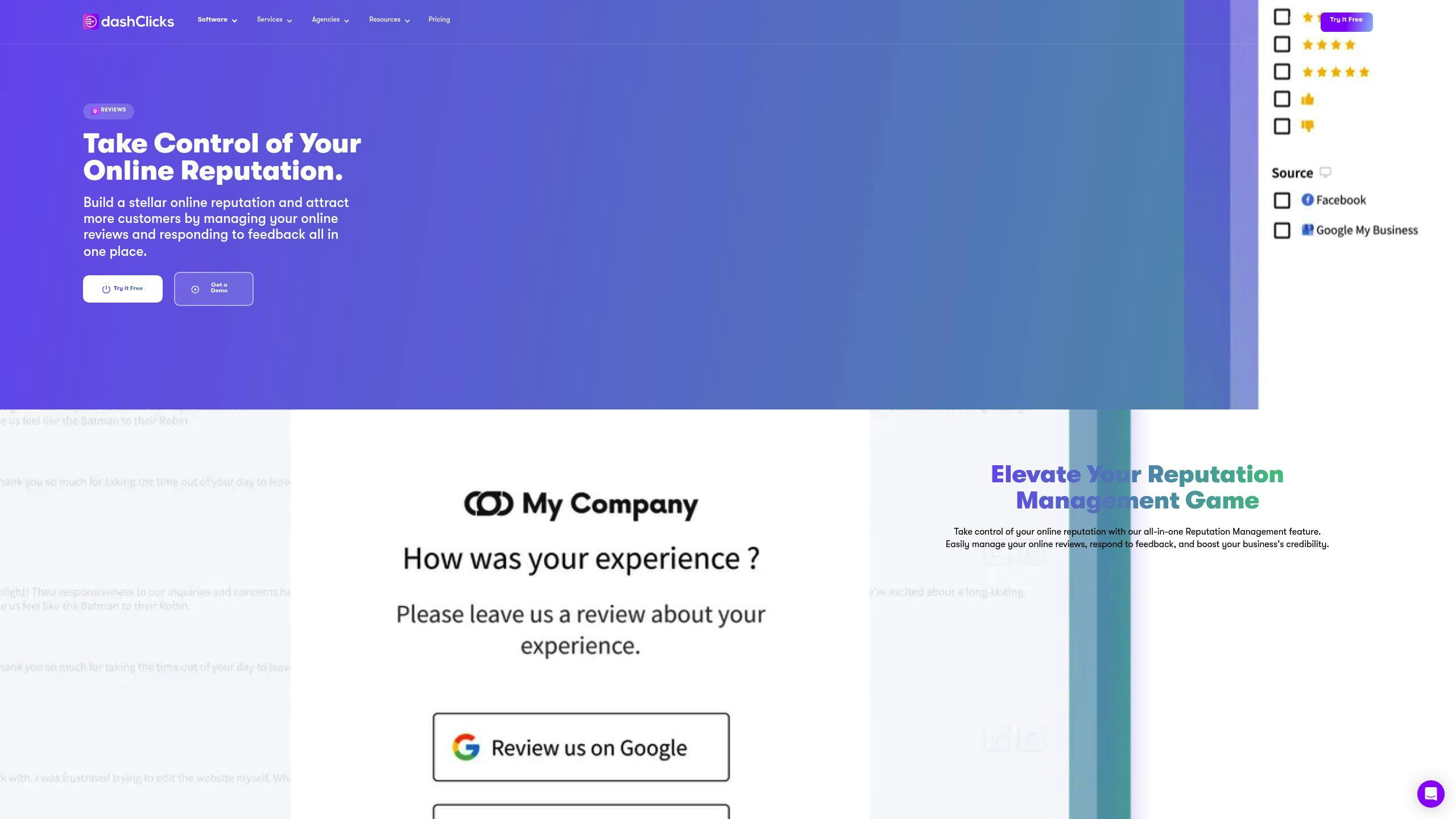Here's how to keep your brand consistent across multiple locations:
- Create clear brand guidelines
- Train staff regularly
- Use central content management
- Implement standard operating processes
- Leverage technology tools
- Engage employees as brand champions
- Conduct regular brand audits
Why it matters:
- Builds customer trust
- Improves marketing efficiency
- Attracts business partners
Key challenges:
- Balancing local needs with brand identity
- Maintaining communication across locations
- Resource constraints for smaller branches
| Element | Why It's Important |
|---|---|
| Visual identity | Quick brand recognition |
| Brand voice | Builds familiarity and trust |
| Customer experience | Creates loyal customers |
| Operating standards | Ensures quality everywhere |
The goal: Find the sweet spot between a unified brand and necessary local tweaks.
Why Brand Consistency Matters for Multi-Location SMBs
Brand consistency isn't just about slapping the same logo everywhere. It's about creating a unified experience for customers, no matter where they interact with your business.
Building Trust and Loyalty
Consistent branding builds trust. And trust? That's the foundation of customer loyalty.
Think about McDonald's. Those golden arches mean the same thing in New York or Tokyo. That consistency has helped them build a massive, loyal customer base.
"Consistency is the best way to build trust. And trust is key to running a successful brand."
Improving Marketing Efficiency
Consistent branding makes your marketing more effective and cheaper. When all locations use the same branding, you can reuse marketing materials across sites. This saves time and money.
Here's a fun fact: consistent branding across platforms can boost revenue by up to 23%. Why? Because repeated, consistent messaging sticks with customers.
Attracting Business Partners
A strong, consistent brand attracts potential partners and franchisees. It shows you've got your act together.
Take Starbucks. Their consistent brand image made them attractive to local partners when they expanded globally. This consistency fueled their rapid international growth.
| Benefit | Impact |
|---|---|
| Builds trust | Customers know what to expect |
| Improves marketing | Reduces costs, increases effectiveness |
| Attracts partners | Makes expansion easier |
In today's market, brand consistency isn't optional. It's a must for multi-location SMBs looking to grow and thrive.
2. Key Parts of Brand Consistency
Brand consistency isn't just slapping your logo everywhere. It's about creating a unified experience for your customers. Here's what matters:
2.1. Visual Identity
Think of this as your business's face. It includes:
- Logo
- Colors
- Fonts
- Design elements
Starbucks nails this. Their green mermaid logo? You can spot it a mile away. They use the same look everywhere - stores, websites, products. You name it.
2.2. Brand Voice and Message
Your brand voice is HOW you talk. Your message is WHAT you say.
Patagonia's a great example. They're straight-talkers with a passion for the planet. It shows in everything they do - even donating profits to fight climate change.
2.3. Customer Experience
This is how people FEEL when they interact with you. It should be the same everywhere.
McDonald's? They've got this down pat. Walk into any McDonald's, anywhere, and you know exactly what you're getting.
2.4. Operating Standards
These are your behind-the-scenes rules. They cover:
- Staff training
- Customer service policies
- Quality control
Chipotle's a pro at this. As Kenneth C. Bator says:
"When you walk into a Chipotle you're going to have the same look and feel whether you are in San Antonio or Manhattan."
Why does all this matter? Let's break it down:
| Part | Why It's Important |
|---|---|
| Visual Identity | Quick brand recognition |
| Brand Voice | Builds familiarity and trust |
| Customer Experience | Creates loyal, repeat customers |
| Operating Standards | Ensures quality across locations |
3. Creating Brand Guidelines
Brand guidelines are your playbook for consistency. They're not optional - they're essential for multi-location SMBs. Here's how to create them:
3.1. Make a Brand Playbook
Your brand playbook is the bible for your brand. It should cover:
- Logo usage
- Color palette
- Typography
- Brand voice
Tip: Keep it simple. Starbucks nails this with a microsite for their guidelines. It shows how to use their branding across platforms.
3.2. Set Customer Service Standards
Customer service is your brand in action. Your guidelines should define:
- Response times
- Tone of voice
- Problem-solving steps
Here's a quick example:
| Aspect | Standard |
|---|---|
| Response Time | 1 hour (business hours) |
| Tone | Friendly and helpful |
| Problem-Solving | HEAR method (Hear, Empathize, Apologize, Resolve) |
3.3. Show Correct Brand Usage
Don't just tell - show. Include examples of:
- Correct logo placement
- Color combinations
- Font usage
Pro tip: Show the don'ts too. Subway's guidelines are great at showing what NOT to do with their logo.
Make your guidelines reflect your brand's personality. Buffalo Wild Wings does this well, using a friendly tone that makes franchise partners feel like part of the team.
Lastly, make your guidelines easy to access. A digital version is easy to update and share. This keeps everyone on the same page - literally.
4. Ways to Keep Brands Consistent Across Locations
Keeping your brand consistent isn't just about logos. It's about creating a unified experience everywhere. Here's how:
4.1. Regular Staff Training
Your staff are your brand's face. They need to know it well:
- Run brand training quarterly
- Create an online library with training videos
- Use role-playing to practice brand values
Starbucks does this with "Barista Basics" training. It ensures every customer gets the "Starbucks experience", no matter where they are.
4.2. Central Content Management
One brand, one source of truth:
- Use a single platform for all brand materials
- Keep brand assets updated
- Control who can edit core brand elements
McDonald's uses a global system to push new promo materials to all 39,000+ locations at once. This keeps their message consistent worldwide.
4.3. Standard Operating Processes
Your brand is also about how you do things:
- Document key processes
- Audit locations regularly
- Encourage feedback on what works
Domino's has a standard 3-minute pizza-making process in all stores. This ensures your pizza is made the same way, whether you're in Miami or Montana.
sbb-itb-0fc0b25
5. Using Technology for Brand Consistency
Tech tools can be a game-changer for multi-location SMBs aiming to keep their brand consistent. Here's how:
5.1. Brand Management Software
Think of brand management software as your brand's digital home base. It's where you:
- Store all your brand goodies (logos, fonts, you name it)
- Share the brand rulebook with your team
- Control who gets to touch your brand stuff
ClickUp's a solid option here. They've got a free plan, or you can go pro starting at $7/month per user. Plus, it plays nice with over 1,000 other work tools.
5.2. ReputationDash for Brand Consistency

Your online rep? It's a big deal for brand consistency. That's where ReputationDash comes in:
- It keeps an eye on your online reviews across all locations
- Gives you a heads up if someone's not happy
- Helps you respond to reviews fast and consistently
So whether a customer's in the Big Apple or LA, your brand voice stays the same.
5.3. Central Communication Platforms
Keeping everyone in the loop is crucial for brand consistency. Central communication platforms help you:
- Spread the word about brand guidelines
- Let teams ask questions about brand stuff
- Make sure all locations get the same info, at the same time
Slack's a popular pick for this. They've got a free plan, or you can upgrade starting at $7.25/month.
6. How Employees Help with Brand Consistency
Your employees are your brand's frontline. They interact with customers, post on social media, and represent your company daily. Let's explore how they keep your brand consistent across locations.
6.1. Employees as Brand Representatives
Your employees are living, breathing billboards for your brand. Here's how to turn them into brand champions:
- Train them well: Ensure everyone knows your brand inside out. Starbucks does this with their "Starbucks College Achievement Plan".
- Give them tools: Create an easy-to-use brand playbook with guidelines and examples.
- Encourage social sharing: Employee-shared brand content gets 561% more reach than company-shared content. Set simple guidelines and let them go!
- Recognize champions: Celebrate employees who go above and beyond in representing your brand.
6.2. Getting Local Market Insights
Your employees are also your local intel. They can provide valuable insights into brand perception in different locations.
Here's how to tap into this:
- Set up feedback channels: Create easy ways for employees to share customer feedback.
- Ask specific questions: Don't just ask "How's it going?". Try "What's the most common complaint about our brand?"
- Act on insights: Show employees their feedback matters by taking action on it.
7. Checking and Measuring Brand Consistency
Want to keep your brand strong across locations? You need to check and measure how you're doing. Here's how:
7.1. Regular Brand Checks
Do a brand health check every quarter. Look at your website, social media posts, marketing materials, and customer service scripts. Compare these to your brand guidelines. Are colors, fonts, and messaging consistent?
Pro tip: Use a checklist. Include logo use, color schemes, and tone of voice.
7.2. Review Customer Feedback
Your customers can tell you a lot about your brand consistency:
- Check online reviews regularly
- Run customer surveys
- Monitor social media mentions
Look for comments about different experiences at various locations. If customers love you in one place but not another, you've got a problem.
7.3. Track Brand Performance
Use data to see how your brand is doing. Key metrics include:
| Metric | What It Measures | Why It Matters |
|---|---|---|
| Brand awareness | % of people who know your brand | Shows if you're memorable |
| Share of voice | % of industry mentions about you | Indicates market presence |
| Net Promoter Score | Customer recommendation likelihood | Reflects overall experience |
Example: Starbucks tracks brand performance closely. In 2022, their U.S. brand awareness hit 99%, showing strong consistency across 15,000+ locations.
Conclusion
Brand consistency is crucial for multi-location SMBs. It builds trust, boosts marketing, and attracts partners. Here's the lowdown:
Create a brand playbook with clear rules. Train your staff often. Use tech to manage your brand across locations. Get employees on board as brand champions. And don't forget to check your brand health regularly.
But here's the kicker: local flavor matters too. Take a page from Starbucks' book:
In 2022, Starbucks hit 99% brand awareness in the U.S. across 15,000+ locations.
How? They keep core elements consistent but add local touches. You can do this too:
- Same logo and colors everywhere? Check.
- Tweaked menu or services for each area? You bet.
- Joining local events? Absolutely.
It's all about striking that balance between consistency and local appeal. Get it right, and you'll be on your way to building a strong, recognizable brand across all your locations.


